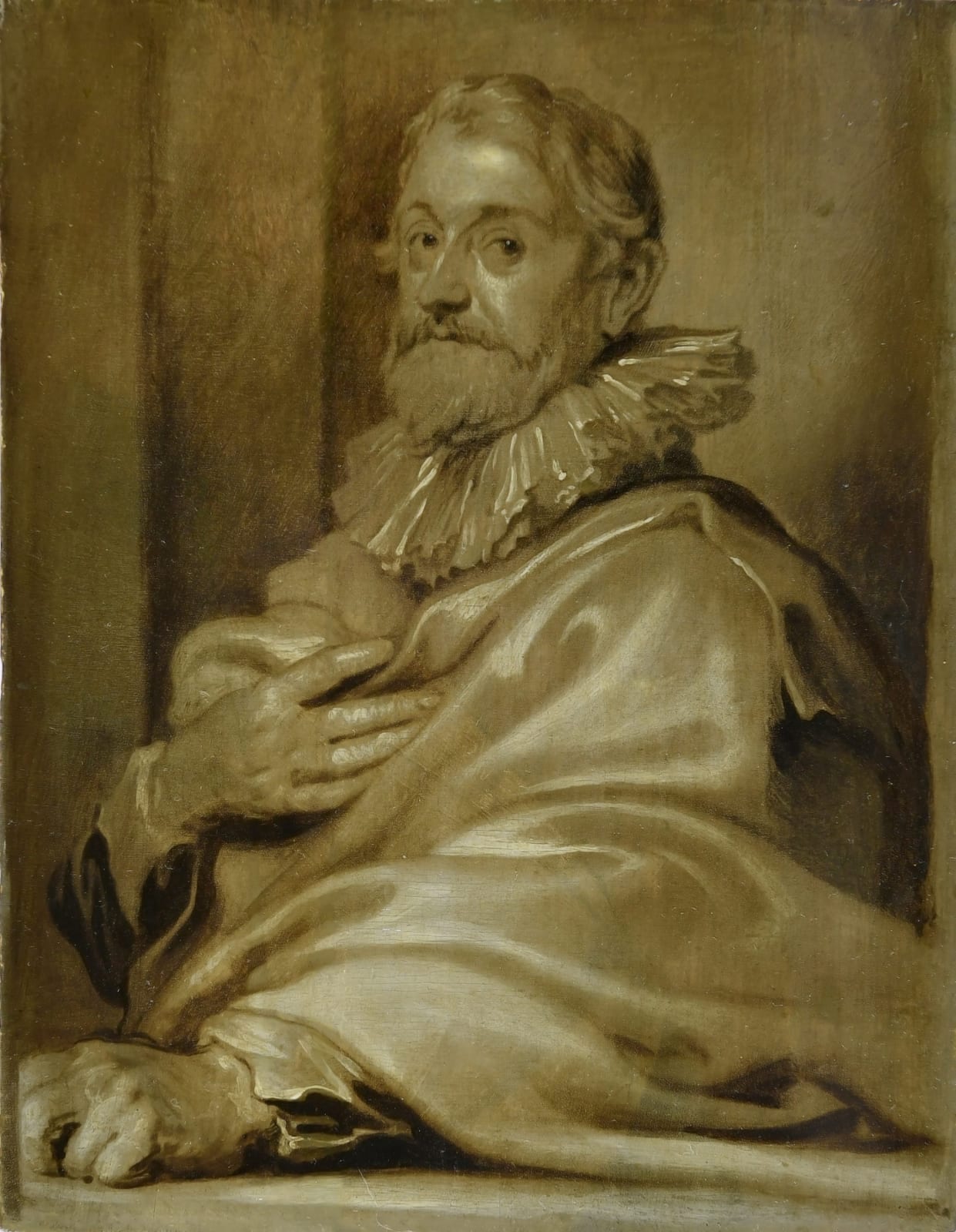Sir Anthony van Dyck (Antwerp 1599 - 1641 London) (workshop)
The present painting, depicting a portrait of the Antwerp draughtsman and engraver Pieter I de Jode (Antwerp 1570 – 1634), was probably painted sometime before 1641. It forms part of a large group of grisaille works, of which there is a substantial part in the collection of the Duke of Buccleuch in Boughton House, Northamptonshire. These grisaille portraits, which once were in the collection of Sir Peter Lely, were very well known in their days. Several among them, including the portrait of de Jode, became known widespread through a series of engravings called the Icones Principum Virorum, which was designed by Anthony van Dyck in the early 1630’s and was later executed by Lucas Vorstermans and Paulus Pontius (New Holstein 85). It is believed the grisaille and brunaille works were models for the prints; some have been attributed to van Dyck himself and others to artists in his studio. However, although the grisaille sketches are obviously connected to the series of engravings, the attribution of these tonal models, whether to Van Dyck or his studio, has long been debated. In some cases several versions have survived, making it difficult to distinguish which was the prototype.
Although individual portraits were in circulation by 1632, the complete edition of 80 engravings by various printmakers was only published in 1645, four years after Anthony van Dyck’s death. (The portrait of de Jode, for instance, was engraved by Vorstermans and published by Maarten van den Enden, probably sometime before 1641.) The beautifully executed portrait captures the soft and intelligent expression of the sitter in a convincing manner, while the quality of the paintwork clearly shows in the execution of the hand and face. The present painting was not based, however, on the finished engraving, as it is in reverse to the present work. It is in fact another version of the portrait of Pieter I de Jode, which is attributed to van Dyck, in the collection of the Duke of Buccleuch. Typical for the artist is the enormous detail that has gone into the careful rendering of the face and the placement of the hands, whereas the drapery, although very fluid, is more sketched in nature.
Provenance
Private collection, The Hague;
Private collection, Belgium.
Exhibitions
Oude Kunst in Haagsch Bezit, Haags Gemeente Museum, The Hague, 1936 (as by Sir Anthony van Dyck)
- X
- Tumblr

